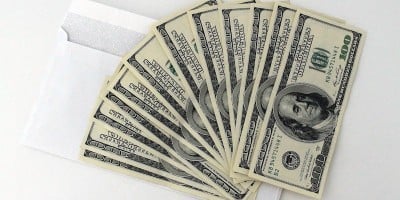There were so many important financial events in the 2000s that it is hard to choose the top 10—it was a jam-packed decade of financial events in the United States and around the world. Some were good, and some were bad, but all of them were newsworthy. And each of them has been important to small businesses.
Here is a top 10 list, ordered by year.
Year 2000: Bursting of the Dot.com (or Technology) Bubble
The internet was in style. Entrepreneurs saw potential in online business. However, online business was really in its infancy. Everyone was talking about a "new economy" which referred to an internet-driven economy. Most of the dot.com stocks, like Yahoo.com, were listed on the NASDAQ. In January 2000, the NASDAQ closed above 5000. 10 years later, the NASDAQ was trading around 2700.
Investors were getting rich off unprofitable stocks with high prices and higher price/earnings ratios—firms like software companies and all things computer and internet. Cisco Systems, for example, traded at more than 150 times earnings in March of 2000.
In April 2000, an inflation report caused the speculative bubble to burst and there were huge investment losses.
Year 2001: September 11 Terrorist Attacks
The 9/11 terrorist attacks helped shape other financial events of the decade. After that terrible day in September 2001, our economic climate was never to be the same again.
It was only the third time in history that the New York Stock Exchange was shut down for a period of time. In this case, it was closed from September 10–17. Besides the tragic human loss of that day, the economic loss cannot be truly known.
Some estimate that there were more than $40 billion in insurance losses alone. Approximately 18,000 small businesses were either displaced or destroyed in Lower Manhattan after the Twin Towers fell. The Department of Homeland Security was created. 9/11 caused a catastrophic financial loss for the U.S.
Year 2001: Enron, the Emergence of Corporate Fraud, and Corporate Governance
Enron hid billions of dollars of debt from its shareholders in failed deals and projects. Furthermore, it pressured its auditors, Arthur Andersen, to ignore the issues. Shareholders lost more than $60 billion.
Year 2002: Stock Market Crash
After a brief slide post 9/11, the stock market rallied but began to slide again in March 2002. The market reached lows not seen since 1997 and 1998 by July and September of 2002.
The corporate fraud scandals, such as Enron, along with 9/11, were contributors to this loss of investor confidence in the stock market.
Years 2001 and 2003–Present: War on Terror and Iraq War
After the 9/11 terrorist attacks, the War on Terror was launched in Afghanistan, and the Iraq War was launched in 2003. The cost of these wars is ongoing. By December 2020, it was estimated that U.S. taxpayers have paid more than $6.4 trillion to fund those operations overseas. This has been an incredible financial drain on our economy, and it is impossible to know what the final cost will be.
Year 2005: China and India Grow as World Financial Powers
The rise of China and India as world financial powers is nothing short of amazing. China, alone, grew at an average rate of 9.8% during the previous two decades. Together, the two countries account for one-third of the world's population.
Countries like the United States initially started outsourcing work to China and India because of cheap labor, but this is no longer the case. They kept their work in the two countries because they found talent—talent for innovation in high-tech fields. Millions of scientists and engineers are educated in India and China each year, compared to a much lower number in the U.S. The balance of power in technologies is likely to move West to East.
Year 2005: Hurricanes Katrina and Rita
On August 25, 2005, Hurricane Katrina hit the Gulf Coast of the U.S. as a strong Category 3 or low Category 4 storm. It quickly became the biggest natural disaster in U.S. history, almost destroying New Orleans entirely due to severe flooding.
Hurricane Rita quickly followed Katrina, only making matters worse. Between the two, more than $175 billion in damage was done. More than 500,000 jobs were lost and more than homes were destroyed. Hundreds of thousands of people were displaced, and more than 1,800 were killed or missing. The effect on oil and gasoline prices was long-lasting.
Years 2007 and 2008: Sub-Prime Housing Crisis and the Housing Bubble
In the early part of the 21st century, the U.S. housing market was booming. Housing values were high. Just about anyone who wanted to buy a home could buy a home. A phenomenon called sub-prime lending arose. Individuals and families who, in the past, could not have qualified for a mortgage, were able to qualify for adjustable-rate mortgages with low or no down payments and low initial interest rates.
Banks made mortgage loans to these individuals for houses with inflated values. As the interest rates rose and their adjustable-rate loans got more expensive, they couldn't make their mortgage payments. Soon, large financial institutions were holding portfolios of loans that were worthless. The subprime mortgage crisis and the "credit crunch" ensued.
Year 2008: Bernard Madoff and the Biggest Ponzi Scheme in History
Bernard Madoff, who owned his own investment advisory firm, was a former chairman of the NASDAQ. In 2008, he admitted to running a huge Ponzi scheme where he paid his investors with proceeds from the investments of other clients. Finally, it all unraveled and he could not meet his obligations.
In one of the largest investment fraud schemes in Wall Street history, Madoff defrauded his investors of more than $50 billion. He was subsequently sentenced to 150 years in prison.
Years 2007–2009: The Global Recession and the Collapse of Wall Street
In September of 2008, a seemingly perfect storm of factors came together to precipitate the deepest economic downturn since the Great Depression. And it wasn't only in the U.S., but across the globe as well.
The great investment banks that had stood on Wall Street began to collapse due to the sub-prime mortgage crisis and serious corporate fraud. During the last months of the Bush Administration, the federal government stepped in to bail out some of these institutions in order to keep the U.S. financial system afloat.
By the time the Obama Administration reached the White House in January of 2009, the economy had contracted and the recession had taken hold. At the end of 2009, there were signs of recovery, but it didn't happen overnight.






